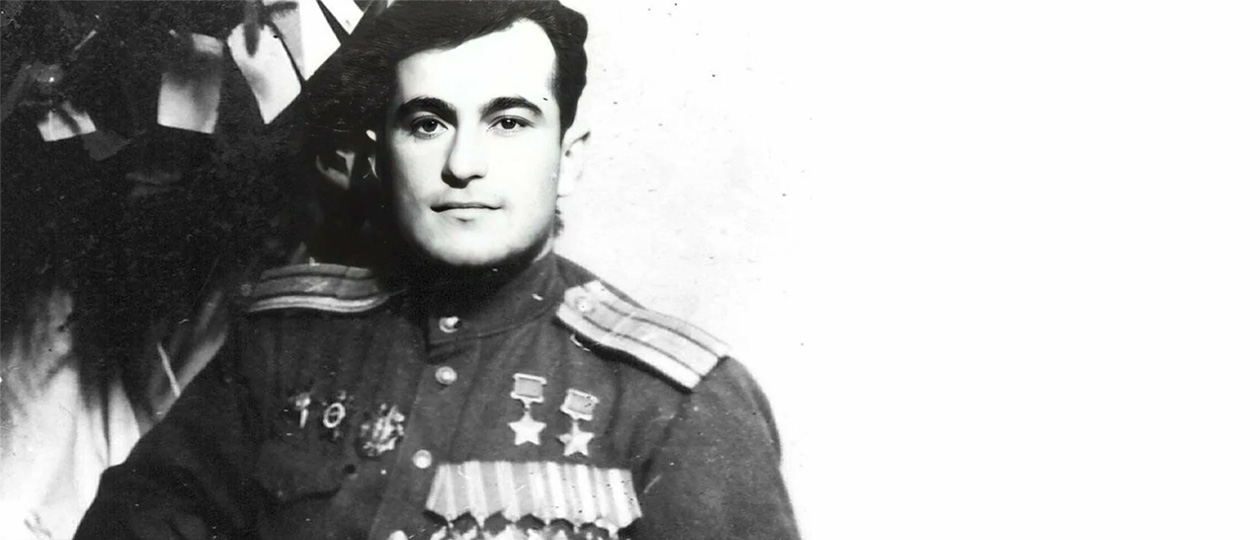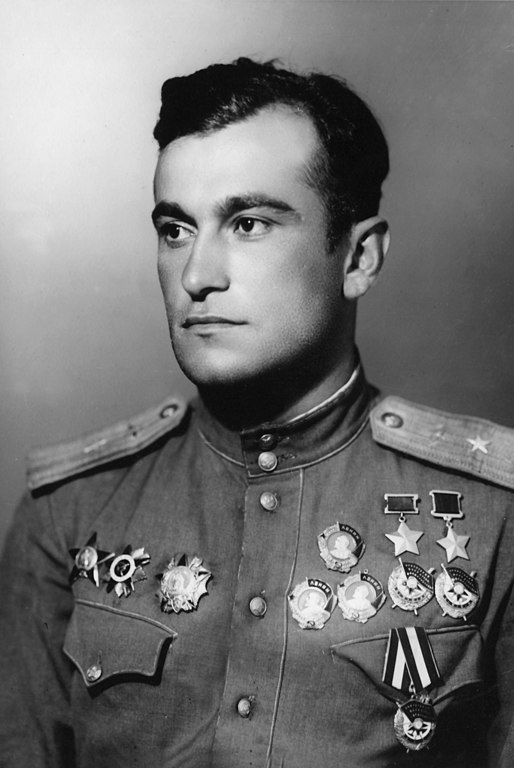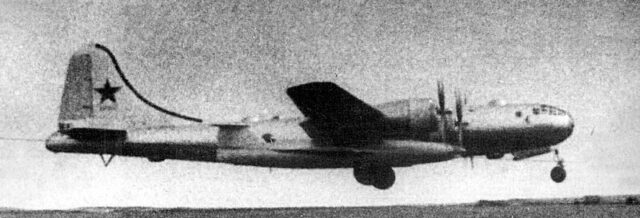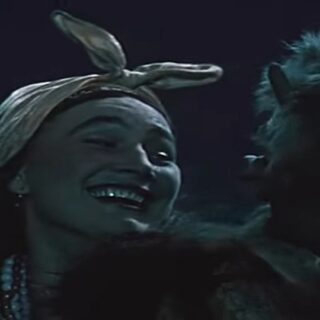
Amet-Khan Sultan was born in Crimea on October 25, 1920, to a Lak father and a Crimean Tatar mother. Like many young people of the 1930s, he attended an aeroclub, which determined his future fate.
Having been drafted into the army in 1939, Amet-Khan was sent to the Kachin Aviation School, from where he graduated in 1940 as a military pilot.
The fighter regiment where Amet-Khan served was stationed in Moldova and was equipped with I-153 and I-15 aircraft. The young pilot’s combat sorties began in the first days of the war. The regiment lost many pilots and aircraft, and after being reformed, it provided air defense for Yaroslavl.

During one of his shifts on May 30, 1942, Amet-Khan noticed an enemy Junkers-88 reconnaissance aircraft approaching. He fired all his ammunition at it, but due to his lack of combat experience, he was unable to hit the target. Therefore, he rammed it.
Amet-Khan saved himself by jumping out of a parachute. He was awarded the Order of the Red Banner. After that, the pilot fought courageously and effectively in the skies over Voronezh and Stalingrad, becoming an experienced and seasoned fighter by 1943.
Then Amet-Khan was enlisted in the 9th Guards Fighter Aviation Regiment. It gathered experienced fighter pilots capable of giving battle to the elite of the Luftwaffe. 25 aces of this regiment eventually became Heroes of the Soviet Union, including the commander of the 3rd air squadron, Amet-Khan Sultan, in August 1943. He shot down Germans on various aircraft: Yak-1, Yak-7B, Airacobra, La-7.
His ability to quickly master any equipment would come in handy after the war. On June 29, 1945, for shooting down 30 aircraft personally and 19 as part of a group, Amet-Khan Sultan was awarded the second Gold Star of the Hero of the Soviet Union.
On Stalin’s personal instructions, after the war, the best pilots were sent to study at military academies so that they could lead large aviation units and pass on their unique combat experience to the youth. Amet-Khan was no exception. However, after studying for some time, the guard major submitted a report on dismissal from service.
The lack of an educational base affected him, because he had only 7 years of school and a vocational school behind him. The front-line soldier preferred to leave rather than take someone else’s place at a higher educational institution.
After his dismissal, the pilot was in limbo until his fellow soldiers asked for him. In 1947, Amet-Khan became a test pilot at the Flight Research Institute in Zhukovsky. And in a short time, he became one of the best.
In the early 1950s, the Kometa flying bomb was tested in the USSR. It was launched into the air by a Tu-4 carrier aircraft.

Then the missile started its engine and, separating from the carrier, went on an autonomous flight. During one of the sorties, the flying bomb controlled by Amet-Khan spontaneously separated from the carrier without a running engine and ended up in free fall. The pilot was ordered to jump out with a parachute. But the test pilot managed to start the engine and land the Kometa right at the ground. In 1953, he was awarded the Stalin Prize.
Amet-Khan Sultan also worked in tandem with other test pilots. For example, when testing new ejection seats, he worked with test parachutist Valery Golovin. In November 1958, a powder cartridge went off at the wrong time in the plane. Golovin was squeezed in the ejection seat as if in a vice, and kerosene gushed into the cabin from the punctured fuel tank.
An explosion could have occurred at any second, so Amet-Khan was again ordered to abandon the plane. But he managed to land it in the most difficult conditions. Thus, he saved the life of his comrade and the MiG-15.
Fate protected the hero for a long time, who tested about 100 types of flight equipment. Until February 1, 1971. Testing of a new jet engine on the Tu-16 flying laboratory ended in disaster. The entire crew, led by Amet-Khan, died. He was only 50 years old.
The airport in Makhachkala, a square in Simferopol, a microdistrict in Saki, avenues and streets in nine Russian cities, many schools and other objects are named after the worthy son of the Soviet people. And in Yaroslavl, which he once saved from enemy air raids, a monument was erected in 2010.





